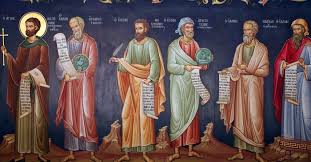
As autumn sets in and Halloween decorations appear, October 31 is often associated with costumes, candy, and “trick-or-treat.” But behind the masks and sweets lies a deeply spiritual season in the Christian calendar that many have forgotten. All Saints’ Day (November 1) and All Souls’ Day (November 2) are rooted in centuries-old traditions, offering profound reflections on life, death, and the afterlife. These two solemn days have unfortunately been overshadowed by the commercialized version of Halloween, diluting their sacred meaning. Let’s rediscover what these holy days truly mean and how they can inspire us in ways “trick-or-treat” never could.
The Origins and Significance of All Saints’ Day
All Saints’ Day, also known as All Hallows’ Day, is celebrated on November 1 by Christians worldwide. This day commemorates all saints and martyrs, both known and unknown, who have reached heaven. The early church instituted this day to honor Christians who, through faith and devotion, became pillars of the Christian community. In honoring these saints, the Church emphasizes their exemplary lives and encourages the faithful to look to them as models of holiness.
For centuries, Christians have gathered on All Saints’ Day to remember these faithful souls and the “communion of saints,” a term that signifies the unity of the faithful on earth with those who have passed on. This celebration is an invitation to contemplate eternal life and aspire to live in the spirit of the saints. It’s a reminder that life has a greater purpose, extending beyond earthly pursuits and pleasures.
All Souls’ Day: Honoring the Departed
Following All Saints’ Day is All Souls’ Day on November 2. This day is dedicated to praying for the souls of the faithful departed who are believed to be in purgatory, undergoing purification before entering heaven. All Souls’ Day invites the faithful to remember deceased loved ones, offering prayers and masses for their souls’ eternal rest.
The practice dates back to the early Middle Ages when Christians would visit cemeteries, light candles, and pray for the dead. This tradition is a profound expression of the Christian belief in life after death and the importance of prayer in helping souls complete their journey toward God. It serves as a gentle reminder of our own mortality and the Christian hope for eternal life.
Halloween: From All Hallows’ Eve to “Trick-or-Treat”
The connection between Halloween and these holy days is actually historical. “Halloween” comes from “All Hallows’ Eve,” the evening before All Saints’ Day, when Christians would prepare for the holy celebrations with vigils and prayers. The custom of dressing in costumes originated with the medieval practice of “souling,” where children and the poor would go door-to-door, offering prayers for the dead in exchange for food or “soul cakes.”
However, as centuries passed, Halloween traditions evolved, particularly in the United States, where they merged with local customs and eventually became focused on fun, costumes, and candy rather than prayer. What was once a night of solemn preparation transformed into a commercialized celebration far removed from its spiritual roots. Today’s Halloween celebrations—with haunted houses, skeleton costumes, and endless candy—mask the deeper meaning of the season: remembrance, prayer, and a connection to those who came before us.
Rediscovering the Spirit of All Saints’ and All Souls’ Days
As people enjoy the festivities of Halloween, there’s a growing awareness of the importance of remembering the deeper, sacred traditions. Here are some ways to reconnect with the true spirit of All Saints’ and All Souls’ Days:
- Pray for the Departed: Take time to offer prayers for your loved ones who have passed. Attend a service or light a candle in their memory, honoring their lives and praying for their peace.
- Visit a Cemetery: This practice, especially on All Souls’ Day, brings a sense of solemnity and connection. Many people find peace in visiting their loved ones’ graves, leaving flowers, and spending a few quiet moments in prayer.
- Reflect on the Lives of the Saints: All Saints’ Day is a perfect time to read about the lives of the saints, learning from their courage, love, and faith. The stories of saints like Francis of Assisi, Joan of Arc, or modern saints such as Mother Teresa inspire us to live with purpose and compassion.
- Host an All Saints’ or All Souls’ Celebration: Some families and communities celebrate these days with meals and gatherings that honor both the saints and their loved ones. Sharing memories and traditions can deepen our understanding and appreciation for the communion of saints.
- Celebrate with Intentionality: While “trick-or-treating” can be enjoyable, try to keep the days after Halloween focused on family, faith, and remembrance, reserving a portion of this season for prayer and reflection.
A Call to Embrace the Sacred Season
All Saints’ and All Souls’ Days remind us that death is not the end, but a continuation of our journey with God. These holy days are an opportunity to reflect on what it means to live a meaningful life and the hope of eternal life in communion with the saints. So, as we enjoy the fun of Halloween, let’s also make room for the spiritual richness these holy days offer. In returning to the true meaning of All Saints’ and All Souls’ Days, we can embrace a tradition of remembrance, gratitude, and hope—one that “trick-or-treat” could never replace.
In bringing back the true essence of these days, we open ourselves to a more fulfilling tradition that celebrates life, faith, and the love that connects us beyond time and place.
